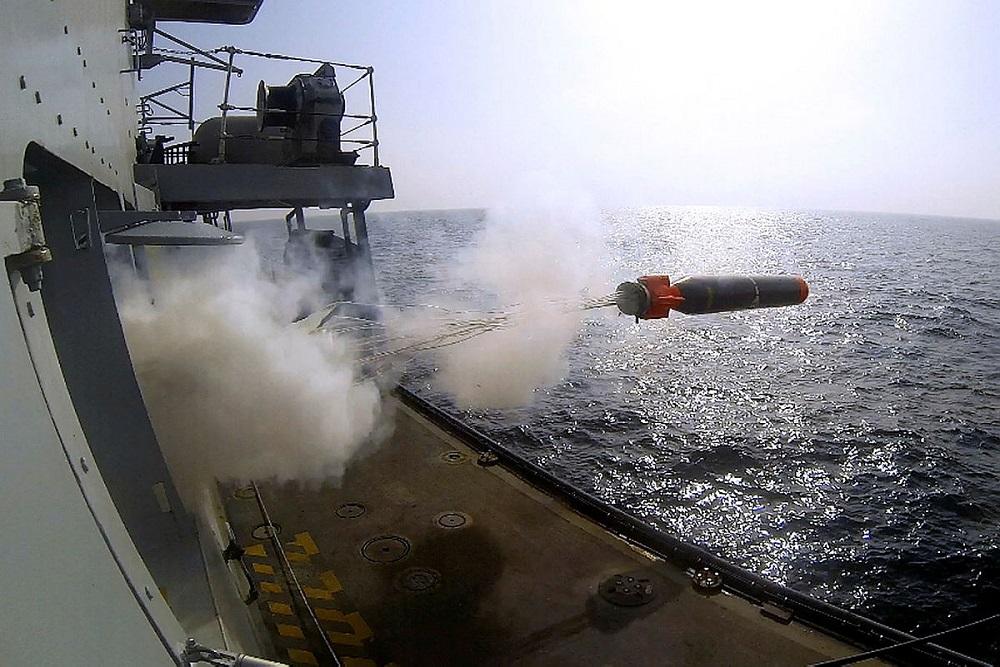
Sea state
An American guided-missile destroyer, USS Carney, shot down three drones launched from Yemen by the Iran-aligned Houthi movement during an hours-long assault after commercial vessels were struck by missiles in the Red Sea. Pentagon officials stopped short of saying US Navy ships were targeted, but the strikes are nonetheless a direct threat to seaborne trade and a high-water mark for maritime attacks linked to the Israel–Hamas war. The Carney wasn’t damaged and no injuries were reported on board.
The Chinese military has accused a US Navy ship of ‘illegally’ intruding into waters near Second Thomas Shoal, a contested area between China and the Philippines. The People’s Liberation Army deployed a force from its southern theatre to track the vessel, which the US Navy’s 7th Fleet maintained was conducting routine operations in accordance with international law. The region has been the site of repeated confrontations between Chinese and Philippine naval and coastguard forces, particularly around the Spratly Islands.
Flight path
NATO’s eastern flank and air-policing power will be reinforced during 2024 as Romania takes delivery of 32 F-16 Fighting Falcon jets from Norway. The US$105 million procurement was first approved in July by the US State Department, following Norway’s decisions to donate at least 13 F-16s to Ukraine and acquire the F-35 stealth fighter.
The Royal Air Force will arm its fleet of Boeing P-8A Poseidon maritime patrol and reconnaissance aircraft with the British-built Sting Ray Mod 1 anti-submarine-warfare torpedo. The String Ray Mod 1 is an autonomous weapon already employed by the Royal Navy and is also expected to be used in Norwegian navy ships and airframes, with the goal of improved fleet flexibility and interoperability between NATO militaries.
Rapid fire
Iran has finalised plans to buy Russian Su-35 fighter jets, Mi-28 attack helicopters and Yak-130 jet trainers. The platforms will join the combat units of the Iranian army in early 2024 and supplement Iran’s small fleet of Russian and American jets, most of which were acquired before the 1979 Islamic Revolution. The deal has been interpreted as a ‘quid pro quo’ for Russia’s use of Iranian Shahed-129 drones against Ukraine and reflects growing military ties between the two widely sanctioned countries.
Last month, the UK Defence Committee met to address concerns over the British army’s ability to upgrade its Challenger 2 main battle tanks. Despite increased defence spending overall, the army has experienced a £30 billion (A$57 billion) budget reduction and is feeling a loss of operational capacity. A shortage of upgradeable Challenger 2 tanks and potential delays may stall planned improvements to their turrets and main guns. In addition, rising global demand for vehicle protection materials is likely to blow out costs.
Final frontier
The US, the UK and Australia are set to strengthen their space-monitoring capabilities as part of the AUKUS pact. In response to emerging threats in space, the three nations will construct ground-based radars in each country, with the first in Western Australia expected to be operational by 2026 and the others by 2030. The system should enhance space domain awareness, helping protect communication and navigation satellites up to 36,000 kilometres away. British Defence Secretary Grant Shapps emphasised the new radars’ sensitivity, accuracy, power and agility, and their ability to perceive threats beyond cloud cover.
South Korea has successfully launched its first military spy satellite using a SpaceX rocket from Vandenberg Space Force Base in California. The launch occurred less than two weeks after North Korea launched its own reconnaissance satellite, highlighting the escalating space race on the peninsula. Operating between 400 and 600 kilometres above earth, South Korea’s satellite boasts the capability to detect objects as small as 30 centimetres. Seoul plans to launch four more spy satellites by 2025 to bolster its monitoring of Pyongyang.
Wired watchtower
The UK’s most hazardous nuclear site, Sellafield, has been hacked by cyber groups strongly associated with Russia and China, as revealed by The Guardian. Senior staff at the vast nuclear waste and decommissioning site allegedly concealed this disclosure and its potential ramifications. Initial breaches were suspected as early as 2015, when sleeper malware was detected in Sellafield’s computer networks. The revelation has raised concerns that hackers could compromise activities like the movement of radioactive waste, monitoring of leaks and fire checks. Despite these claims, the UK government says that it has seen no evidence of a successful state-sponsored attack on the facility.
Japan’s space agency, JAXA, has fallen victim to a cyberattack targeting its network server. The incident likely occurred in mid-2023 but was only discovered in the past month or so when law enforcement contacted the agency. The hackers reportedly gained unauthorised access to JAXA’s central active directory server, compromising employee IDs, passwords and viewing privileges. JAXA temporarily shut down part of its network to assess the situation and, while no significant data leakage has been confirmed, a JAXA official said it was ‘very likely’ that important information was visible to the hackers.